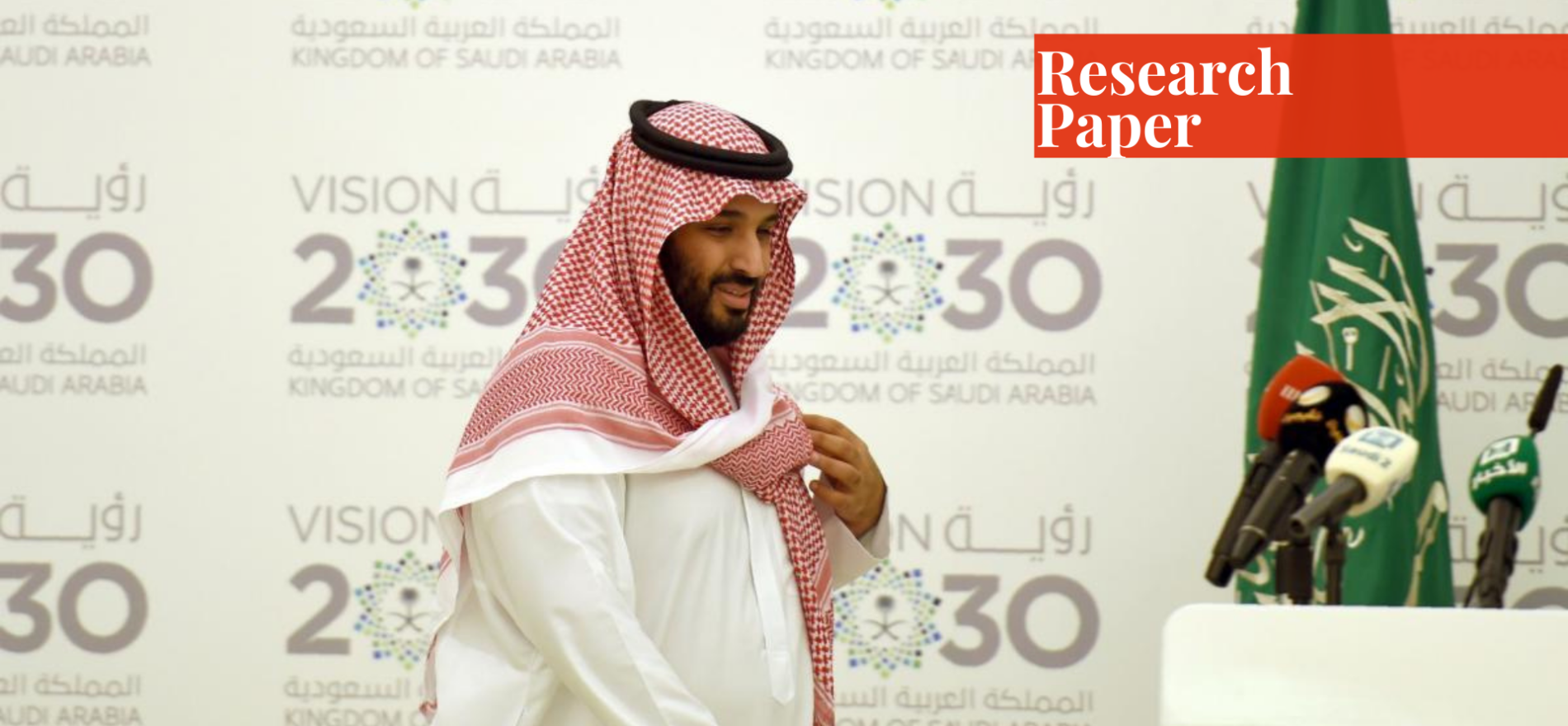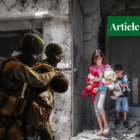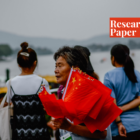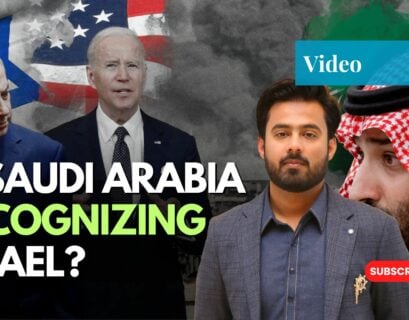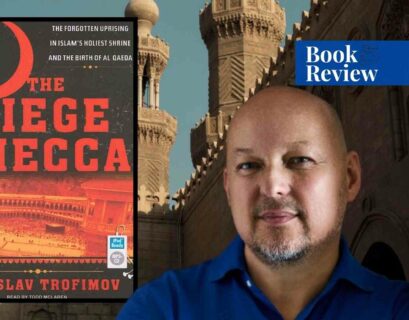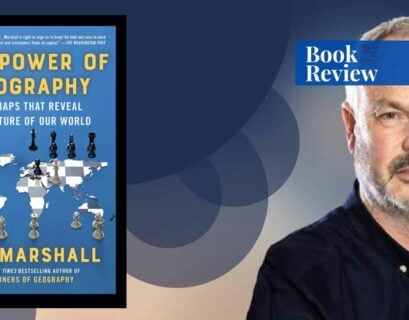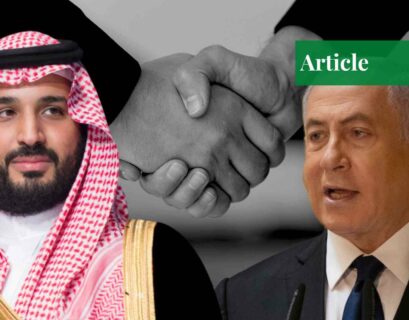Lyba Mobeen is currently pursuing her degree of BS-International Relations from Islamic University Islamabad.
Abstract
Ever since the death of King Abdullah in 2015 and the rise of Mohammad bin Salman, from being one of the sons of the Salman clan to the most influential and powerful personality throughout Saudi Arabia, the country has witnessed some magnificent changes. The Modernisation Reforms and Saudi Arabia’s Vision 2030 stand out as the most dynamic move provided the conservatism and traditionalism that surrounds the Saudi state and society.
This research paper aims to visualize the modernizing reforms being introduced through the Vision 2030 program: its aims, objectives, and implementation strategies along with the backend motivation and driving principles behind this enormous change. It further aims to analyze whether the change is limited to a blueprint or if it is indeed being executed within the social, economic, and political spheres; the core research problem of the paper.
To accumulate data for the research, secondary methods i.e., articles, journals, newspapers, research papers, books, etc. have been employed. The scope of the research is academic in highlighting the research aspects never thoroughly discussed previously, and laying the basis of future research. It is also practical in terms of analyzing the causes and extent of the implications of these modernization plans and schemes.
The paper concludes on the note that while the transformation is a colossal one, it falls under the tag of “being too risky” because while its success, on one hand, can prove to be monumental for Saudi Arabia, its failure, on the other, can also put the nation through utter chaos as the state asset of Aramco Oil Company had been privatized and its billions of dollars have been invested in this revision.
Introduction
The Saudi modernization plan is a series of social, political, and economic reforms brought about to shift Saudi Arabia from the orthodox track of an oil-struck economy with an incapable and corrupt political system and a highly restricted and conservative society, to the modern and reformed path of the diversified and investment-based economy, accountable and efficient political structure, and moderate, tolerable, and open social frameworks.
This is one of the most aspiring and innovative schemes envisioned by Mohammad bin Salman ever since he became the Defence Minister and Secretary-General of the Royal Court in 2015 and the inevitable Crown Prince in 2017. According to Mohammad bin Salman, Saudi Arabia’s economic (being the hub of petrodollar economic activity), geo-political (being an important Middle Eastern state and the center of regional politics), and geo-strategic (connecting Asia, Europe, and Africa’s continents) significance has long been undermined and misused by the previous monarchic leadership and is now, in dire need to reinstate Saudi Arabia’s caliber and distinction in global affairs.
Extensive economic dependence on oil and the petrodollar economy has caused Saudi Arabia to face both extremes; the extreme of wealth in the initial years of the 21st century and the extreme of economic depression and debt since the last quarter of 2014. The passing of King Abdullah in 2015 and the eruption of new monarchic leadership in the form of King Salman, a relatively well-educated, unorthodox, and revolutionary-minded, has set off a dynamic shift for the diversification of the oil-centric economy of Saudi Arabia. It was initiated through the McKinsey Global Institute’s 2015 report of “Saudi Arabia Beyond Oil” and ultimately took shape of the “Vision 2030 Plan”.
Moreover, MBS’s close alliance with his father since childhood has proved to be an eye-opener for him on the internal power dynamics of the Al-Saud dynasty. Witnessing the lavish lifestyles of most of the Royal Family members with no input in the nation’s governance and growth has caused MBS to have a bitter and harsh attitude towards them for not representing Saudi Arabia globally in its true sense. This is irrespective of the fact that Saudi Arabia is geographically, politically, and strategically one of the most important nations not just in the Middle East but, in the world.
The resentment coupled with an urge and desire in him to prove his and Saudi Arabia’s worth and to revitalize its significance worldwide, MBS took steps to revamp the traditional power tactics, reassess his political game and impress upon the world what the Gulf state is capable of.
The area of study of the research paper is kept within the bounds of the introduction of the Vision 2030 Plan, the primary sources of this drastic change, and whether the plan is a real phenomenon. The study is limited to the Saudi Arabian perspective and analysis of the project is presented through the outlook of Saudi Arabian public and private development.
Hypotheses
H1: Saudi Arabia’s Vision 2030 is a program of social, political, and economic reforms to rebuild Saudi societal structure and is expected to bring about monumental changes in these three spheres of Saudi society.
H2: The desire to be accepted, domestically by the public and internationally by the state and non-state actors, along with economic derivates, have compelled the Al-Saud regime to modernize their traditional ways.
H3: Saudi Arabia’s modernization plan is a reality for the bigger metropolitan cities but, an alien phenomenon for the smaller primitive cities and societies.
All the hypotheses have been inductively deduced which will serve as the foundation of the research paper.
Theoretical Framework
The transformation and modernization of the Saudi Arabian society can be better understood and explained through the Liberalist lens and perspective. Mohammad bin Salman, a comparatively young and well-educated Crown Prince, had timely come about the realization that the international system today, works on the Liberal World Order, the international laws, agreements, treaties are all implemented by the international organizations (beyond state-ism).
The economic principles that prevail in the international markets are that of free trade, open markets, and capitalism as monopolized by the few liberal, democratic and capitalist states and non-state actors. Thirdly, the international norms widespread in the international system are that of liberal basis i.e., cooperation, human rights, democracy, rule of law (Deudney and Ikenberry, 1999). Henceforth, to establish himself and Saudi Arabia as a significant actor in international politics, international market, and international relations, MBS has made certain changes based on the liberal teachings to the prevailing socio-economic and political order of the Gulf state. However, he does not aim to implement liberalism in all its shapes and forms.
The liberal traits of free trade, an open economy, fewer tariffs, and more economic cooperation have been applied by MBS and his administration in the shift from protectionist economic policies; the traditionalist approach had not only damaged Saudi economic capabilities but also lessened its level of economic interaction amongst other States.
Likewise, the liberal assumptions of human rights, equality, individual liberty, justice, order, and toleration (Kant) have also been promoted, and the uplifting of social restrictions, removing the ban on women driving, no gender interactions, control of Wahhabi clerics, are examples of this.
Another important characteristic of liberalism is the check and balance in the exercise of power. Though the liberalists defend a Republican or Democratic form of government where the general public is the ruler and chances of conflict and war are reduced to zero, however, Saudi Arabia holds a perspective on the contrary. It has long exercised the monarchic regime and is not even slightly interested in such a huge transformation of the political system.
However, MBS has been an active critic of corruption and has now and then been involved in anti-corruption activities and measures. Therefore, it was convenient for MBS to execute those bits and pieces of the liberalist cores which were not threatful to his throne, i.e., analyzing and keenly observing the use of power by the political entities, and to ensure no corruption or misuse of political influence is involved, which can prove to be damaging for the Saudi Arabian image.
Research Methodology
The nature of the research paper is analytical and is followed by a case study research design. To verify my argument, the data collected for the paper is mainly qualitative, as it provides an in-depth analysis of the proposed research question, but is also verified and authenticated by quantitative statistics, figures, and facts, where necessary.
Vision 2030
Vision 2030 is a scheme of social and economic reforms introduced by Mohammad bin Salman to rejuvenate and refurbish Saudi society and state. The reforms are of three types; societal reforms to modify the society from strict social norms to moderatism and modernism, political reforms to strengthen the norm of accountability, evade corrupt practices and the misuse of power, and economic reforms to decrease the dependency on oil and petroleum for revenue generation, diversify the economy and to unlock the economic sector for foreign investment and open market. Announced in April 2016, the Vision 2030 program has gained international interest and roaming speculations.
What does it hold for the Saudi People?
A one-liner of this gigantic program is “To increase non-oil revenue to 600 Billion Riyal ($160 bn; £124 bn) by 2020 and 1 Trillion Riyal by 2030; from 163.5 Billion Riyal in 2015.”As far as the theoretical approach is concerned (the Key Performance Indicators), Vision 2030 is expected to achieve milestones in all three pillars for the Saudi State by 2030:
- To increase the hosting capacity of Umrah visitors from 8 Million to 30 Million, approximately 4 times the current capability.
- To build entire cities for economic purposes and to register at least 3 of those cities into the World’s top-ranked cities.
- To escalate the GDP contribution of the local small and medium industry from20% currently to 35% by 2030.
- To inflate the Public Investment Bank’s resources from 600 Billion SAR to 7 Trillion.
- To improve ranking in the Government Effectivity Index from 80th to 20th.
Pillars & Objectives of Vision 2030
Vision 2030 comprises of three pillars:
- Society, which focuses on the accomplishment and advancement of moderatism and liberalism in the society.
- Economy, which focuses on the restructuring of the economy as per the contemporary demands and ensuring maximum accommodation of domestic talent and industry in the market.
- Government, which aims to achieve accountability, effectivity, and efficiency of the leading lads.
Under the pillar of establishing a moderate Society, Vision 2030 aims to:
- Ascend tourism through cultural, historic, and religious sites.
- Establish a domestic entertainment industry.
- Improve and advance healthcare facilities.
- Engage the public in sports activities.
- Build cities with better living standards.
- Reframe and open up public socialization and reduce the gender gap.
- Aid the neglected sections of society including the poor, disabled, and the old.
- Restrict environmental degradation.
- Revolutionise Digitalisation.
Under the pillar of shaping an innovative Economy, Vision 2030 aims to:
- Revise education policy and develop a market-centric curriculum.
- Encourage women’s participation in the market.
- Promote local small and middle enterprises.
- Alleviate business atmosphere by establishing economic zones, investment centers, and economic cities.
- Privatize the state industries like Aramco and attracting FDI.
- Revamp renewable energy resources
- Involve Saudi Arabia into regional and international economies by fabricating a logistical hub.
- Make PIF, the largest sovereign fund.
Under the pillar of setting up a capable Government, Vision 2030 aims to:
- Eliminate corruption and ensure lucidity.
- Assist public-government interaction.
- Provide digital government services and ensure the quality of services.
- Abolish the introduction of further taxation and generate revenue from fees.
- Introduce feedback culture to ensure maximum participation of people in governmental affairs and legitimacy.
- Provide necessities of life to its citizens like food and water.
- Inaugurate non-profit organizations and departments for the sake of serving and protecting the citizens.
- Make the bureaucratic decision-making process more agile and swift.
- Ensure social endowment by the business community through charity.
- Aid the public in managing and maintaining financing so they can save and spend accordingly and become less of a burden on the government.
How will Vision 2030 be implemented?
The Vision Statement comprises 96 objectives that the Saudi government aims to accomplish by 2030 and that is to be achieved through the 13 Vision Realisation Programs (VRP).
The total 13 Vision Realisation Programs through which Vision 2030 objectives will be implemented are:
- Quality of Life Program
- Financial Sector Development Program
- Housing Program
- Fiscal Balance Program
- National Transformation Program
- Public Investment Fund Program
- Privatisation Program
- National Companies Transformation Program
- National Industrial Development and Logistics Program
- Strategic Partnership Program
- Hajj and Umrah Program
- Human Capital Development Program
- National Character Enrichment Program
Each VRP has been assigned a set of projects and programs along with a delivery plan to attain those project goals as per the pre-decided 5-Year Plans. VRPs have to pull off the standard Key Performance Indicators in the respective projects that have been established in advance within a restricted time frame and a fiscal budget. To ensure the progress, each VRP has its concerned committee, which is again supervised by the Ministerial Councils as well as the supporting units of CEDA, Adaa, Finance Committee, Delivery Unit, etc. (Vision 2030,2016).

Underlying Reasons for the Change
The factors and events contributing to Saudi Arabia’s shift from conservatism to the modern economy have been stockpiling for a long time and are very important to analyze to understand and study the nature of the decision thoroughly.
The decision to shift from an Oil-based Economy to a Market and Investment based Economy.
Traditionally, oil had been regarded as stable and revenue-generating; the boom of the Saudi Arabian economy over the decades has been proof of this assumption. From 2003 to 2013, the escalation in oil prices has had phenomenal consequences for the Gulf economy, which attributed to two-third of its economy. For Saudi Arabia, this included promotion of the country to the 19th largest Economy, doubling of Saudi GDP, upsurge in Employment, rising of household income up to 75%, and amassing the oil reserves up to 100%.
However, the situation changed in the last quarter of 2014 when the fall in oil prices brought many oil-producing and depending economies on the verge of collapse or into economic depression and Saudi Arabia, being the largest oil producer and consumer (in the Middle East) in 2015, suffered tremendously.
The economy reached its lowest levels of GDP when the revenue fell from $320 Billion in 2013 to $113 Billion in 2016, economic growth fell from 6% to 2% in 2014, stock market’s value fell by half, budget deficits escalated up to 9.3% after a long time and were made to depend on reserves and bonds. This caused the Saudi leadership to reassess and re-evaluate their extended reliance on Oil and Petroleum.
The timely understanding of the uncertainty of oil demand and supply in the future with shifting dynamics of the global energy market, particularly amidst the global efforts to counter climate change along with the internal demographic statistical changes and needs, the Saudi leadership decided to enforce economic, social, political, and structural reforms to move the country from traditional practices and to open itself for the rest of the world, to keep up with the global pace and to ensure a stable economy.
A Political Move to Appeal Youth
As per the statistics, 65% of the Saudi population comprises of youth, and having been brought up in the era of social media, they are assumed to be more demanding than the previous Saudi societies, in terms of, social and political freedoms. To legitimize its rule, it is essential to appeal to two-thirds of society which the MBS government aims to do.
The previous aged Kings and Princes of Saudi Monarchy have had standard repute amongst the people but MBS, being young and in the process of proving his worth and capability, has successfully appealed to youth groups through introducing the modernization reforms and providing opportunities to the people to participate in the nation-building process; it has until now had not been practiced or promoted by the predecessors. Hence, the main appraisers of MBS and his Vision 2030 policies are majorly the youth as compared to older population groups.
To Curb Unemployment
When the Vision 2030 plan was announced in 2016, the driving force behind the decision was the demographic changes in Saudi society, as the number belonging to the age group of 15 to 40 was expected to rise by more than half percent (approx. 60%) and accordingly, the number of old age groups which would increase the burden on the finance and healthcare facilities.
The dual labor market with a smaller number of appearances in the private sector and more preference towards the highly paid public sectors as well as increased immigrant employment in the private sector was also a big challenge. The danger of unemployment, which was 12.8% at that time, was expected to inflate up to 20% by 2030, as on average, 40% of young Saudis (in their 20’s) with education and degrees were unemployed with an escalating workforce entering the Labor Market (more than 9 Million in 2016 only). Household incomes were expected to fall by 20% and the monetary position of the government was to be in a critical position as the net debt could foster up to 140% of the GDP by 2030. Furthermore, budget deficits could increase by many folds provided no necessary steps were taken.
Another problem with Saudi Labour Market was the excessive employment of foreign workers in the private sector which resulted in fewer job opportunities for the locals, hence, causing unemployment. The following table depicts the employment division amongst the Saudi nationals and foreigners; the statistics are highly in favor of non-Saudi labor participation which has become an issue of concern for the government.

The Saudisation program was initiated to accommodate the young population in the public as well as the private sector to ensure employment and to eliminate the myths regarding job security and low income in private enterprises. It aimed to save the young Saudi society from unemployment, to reassess and limit the foreign labor size to ensure the natives and locals are preferred over foreigners for employment, and to adjust millions of job-seekers in different fields and departments of the Labor Market and not just the oil and petroleum industry.
To Eliminate Chances of Social Revolt against the Kingship
Saudi Arabia has a long-drawn history of kingship, monarchic and conservative rule. This has provided fewer opportunities to the public in terms of interaction with the rulers as well as participation in the state affairs or nation-building processes as it has mongered fear and threat amongst the leaders of a social rebellion.
This is the chief reason why Saudis have always criticized and opposed any social revolt against the government in the Middle East especially Iran. Matters have gone smoothly for the Saudis in the 20th century where they have kept the people under strict societal and political control but in the 21st century, with the evolution of media, awareness, and fifth-generation warfare, the case is not the same.
The Saudi administration has realized that rigidity will pose severe challenges for their regime as in the case of Arab Spring. Hence, it has adopted modernization and flexibility tactics to loosen up the social, political, and economic restrictions. Thus, Vision 2030 can also be attributed as a political move to counter any opposition from the general masses.
Exploring the Potential of non-oil fields
Many researchers, analysts, and researchers have explored the potential in Saudi economy apart from oil production and have concluded that Saudi Arabia’s non-oil and private sectors can prove to be of enormous importance in generating revenue for the country from 10% in 2015/16 to 70% by 2030. It would be more stable, reliable and with many folds increase the revenue as compared to an oil-based economy.
Investment in mining, tourism, real estate, retail, healthcare, agriculture, and metallurgy along with many other sectors can prove to be incredible for the growth of Saudi Arabia’s economy by providing 60% of revenue, doubling the GDP accounting for up to $800 Billion and creating employment opportunities (est. 6 Million by 2030) as much as to accommodate the workforce which would increase enormously by 2030.
Realizing the capability and worth of the Saudi economic sector, the leadership decided to transform the economy from traditional dynamics to the contemporary requirement of opening up the economy to maximize the revenue and simultaneously satisfy the public with minimizing chances of criticism against the state.

To Promote Saudi Arabia’s Softer Image
Ever since the 9/11 attacks, Saudi Arabia has been under the limelight of criticism due to the excessive hold of clerics and clergy in state affairs dating back to the 18th Century Wahhabi-Saud Pact. It has been criticized for instigating intolerability, radicalism, and extremism in the state and society. This perception and negative image have deteriorated Saudi political and economic interests regionally and globally and Mohammad bin Salman has now taken up the task to revitalize this distorted image, gain the confidence of the international community and attract tourism and foreign investment because, in the current era, positive soft image of a country is very crucial for its economic indicators to flourish.
To practically implement it, King Abdullah and the crowned Prince have limited and seized power from the traditional and conservative clerics and put a limit to their authoritative rule, which has collectively been endorsed by the West. The social reforms are also a string in line with the same chain of revamping an image of open and modern society to the world.
Empowering the women by promoting their participation in the labor market and society, allowing them to drive, removing the guardianship laws, encouraging them to work, study, and participate in sports activities, reducing gender segregation, easing the public life, loosening strict societal laws and norms, loosening of clerical control; alleviating strict court punishments, all these decisions are receiving a positive response from the West, particularly the United States, human rights organizations, and international watchdogs. Therefore, it is a clear and symbolic indication of Saudi Arabia depicting a progressive image of a societal shift from ultra-conservatism and traditionalism to moderatism and modernization.
Saudi Modernisation: A Myth or Reality?
While discussing whether the modernization decision has practically been implemented or if it is limited to verbal statements, the audience is divided. The natives are strong upholders of the Saudi society being transformed and claim the government’s declarations to be true whereas the foreign analysts and critics hold a critical lens to the Saudi progress. Simultaneously, people criticize the program to be more of symbolic weightage than practical implementation but, then again, symbolism and gestures in international politics are equally important as empirical initiatives.
In the view of the locals and natives, easing of strict public movement, opening up of recreational activities for individuals and families, encouragement of social and public life, provision of basic freedoms to women from driving to employment to self-independence, limiting gender taboos from society, promotion of education domestically as well as at inter-State level, all these transformations are the practical proof of Saudi society shifting towards moderatism and modernism.
This is considered as an enormous development provided decades of strict rules and regulations and many consider it more as a symbolic and visionary gesture rather than a political decision; a symbol to show the world that Saudi Arabia is willing to change and keep up the pace with the rest of the world, which itself, is a remarkable achievement and dynamic decision. The Oxford Business School has surveyed Saudi perception of Vision 2030 and the response has mainly been positive, which clearly shows people’s support for the modernization vision.

Simultaneously, some critiques question the modernization process. The societal transformations are being witnessed only in big urban cities like Jeddah and Riyadh where the population and mindset are already more liberal than other areas of the country, whereas the towns and rural areas have not seen any trace of this modernization. This makes modernization a myth for the rural population and puts a big question mark over the practical worth of this change.
The Saudi people are vehemently known as being more conservative, close-minded, and not apt to change than other societies. Hence, not every Saudi native is accepting the decision of opening up with the same zeal as others. The traditionalists are found to not be in favor of any such policy shift because as per their opinion, modernizing the society would put Saudi Arabia as another pearl in the already long string of neo-colonial and imperialist interests of the West.
Thus, with a huge proportion of society opposing the decision, analysts believe this modernization will not prove to be of any weightage in the long run. The cut down of subsidies and putting up of taxes is another big blow for the locals who have long enjoyed free of cost water, electricity, and petroleum. This step has put so many Saudis under poverty and to tackle the difficulties of the already poor, they have brought the “Citizens Account bill”. With so much economic strain on the public for the first time, the process of privatization could stall if things don’t change.
Another structural obstacle that can put the entire modernization process in jeopardy is that the tribal system in the Saudi society comprises mainly of the Wahhabi sect and the Al-Saud. The Wahhabis are stern in the implementation of Sharia and oppose any rationale for modernizing the society. Till now, Mohammad bin Salman has been able to tackle the Wahhabi clerics but, as per analysts, they can no longer be contained and will pose serious threats to the Saudi Modernising Movement which will, in turn, halt the process.
Critique over the Saudi government is that it is transforming the areas which are under its direct control and has failed to take control of things outside their areas of expertise despite the modernization announcements, which depicts hypocrisy. On one hand, they are promoting labor market participation and easing social and gender norms, whereas, on the other, the country continues to arrest and detain social activities i.e. the case of Raif Badawi and Loujain-al-Hathloul.
This further questions whether Saudi Arabia is actually willing to modernize or is it just a decision to impress upon the international community and attract investment? To know the answer, we need to give time for decisions to unfold and policies to be seen. So, to summarize, it will be too early to declare the modernization process, as either a myth or reality.
Conclusion
Analysis
Analyzing the revolutionary modernization programs, plans, and reforms brought forward by the new energetic and zealous administration of Mohammad bin Salman, it can be re-affirmed that MBS is willing and intending to introduce some liberal perspectives into his country but, also not interested in completely abandoning the traditional and conservative norms, specifically those which are responsible for being the source of political and administrative power. This trade-off between two different theoretical frameworks can help him achieve his economic and socio-political goals along with public acknowledgment and satisfaction and can also ensure stability and security to the Al-Saud dynasty.
However, it may also pose to be a risky step as the failure may put the state in utter chaos as the state asset of Aramco Oil Company was privatized with billions of dollars invested in this transformation. However, observing Mohammad bin Salman’s personality and his over-ambitious domestic and foreign policy decisions, one could expect such over-the-top decisions.
Saudi Arabia’s Vision 2030 with huge speculations for the investment, social, political, tourism, employment, entertainment, and business sectors, is, on paper, nothing less than a dreamy project for a state like the Gulf country. The question, however, remains whether the state and society are capable enough to absorb and accept these changes or not.
Tracing through history, when King Faisal introduced the modernization reforms in the 1960s and 70s through television broadcast, public education including that of girls and other socio-economic reforms, most of the religious establishment did not welcome these changes and the King faced severe backlash, ultimately being murdered by one of his nephews. (Barmin,2018)
However, it must be noted that in the case of MBS, the case has been different as the majority population has been welcoming to the reforms. Therefore, it is hard to contemplate what the future holds for the revolutionary reforms and where will they stand in the future except by granting them time to see how things unfold.
Another major concern is that how long can MBS thrive by boarding two ships at the same time, one of traditionalism and fundamentalism and the other of modernity and liberalism. Liberalism claims more cooperation and fewer conflicts if the states are democratic, economically interdependent, flag-bearers of human rights and individualism and recognize the presence and authority of international organizations and norms, and international markets whereas traditionalism favor upholding communal and ancestral values more than individualism (Deutsch and Fishman,2010). Both these philosophies cannot survive simultaneously, at least not in the long run. Hence, MBS might face a crossroad in the future to decide which system to prefer over the other because with economic interdependence and prevalence of moderatism and individual liberty in society, it would be difficult for Saudi Arabia to restrict its population within the conservative boundaries and easier for the population to critique and question the monarchs (which until now was an alien phenomenon).
To summarise, there cannot be one concrete policy measure needed to ensure the successful transformation of Saudi society and state. Multiple solutions and measures can be and should be taken by the Vision 2030’s administrative division (which have been discussed in the next section comprehensively), as the success or failure of this program lays the basis of the future of Saudi Arabia, a more liberal state with openness and flexibility or a more conservative state, with restrictions and limitations.
Implications
For Saudi Arabia
The success of the modernization reforms is all-in-all, in favor of Saudi Arabia and is meant to bear fruitful results for the leadership as well as the public.
- If the Saudi monarchy is successful in implementing the Vision 2030 Plan the way it is expected and hoped, it will bring nothing short of economic stability for the Saudi Arabian society, whose economy has always been dwindling in between economic boost and economic depression.
- The modernization program with no social restrictions and rules will increase the quality of life and satisfaction level of the Saudi citizens with the political elite. This would ensure an opposition-free continuity of the monarchic rule.
- Saudi Arabia’s image as a traditionalist, conservative and terrorist sponsor state would tarnish with such reforms and would be revised with positive perceptions.
- The shift in economic activity would bring massive opportunities for the young energetic youth of the country in terms of investment, business start-ups, and employment and that would also ensure better trade and inter-state relations of Saudi Arabia with other regional States.
- The reforms can further boost Mohammad bin Salman’s position as a reformer and public leader, and his confidence in his outrageous and ambitious moves of promoting Saudi nationalism.
- With the diversification of the economy and the large inflow of dollars through investment, tourism, and trade, one can expect Saudi Arabia to become a more dominant global player in world economics.
For the Middle East
The success of the modernization reforms is sure to put the already conflictual Middle Eastern region into more chaos.
- With the triumph of Vision 2030 and with public support back home, Mohammad bin Salman is sure to become more valiant, unpredictable, and zealous. His policies and decisions will be more outrageous towards his foes. The bombing of Houthi rebels in Yemen serves as an example.
- Iran-Saudi rivalry is expected to become more tense and complicated. With economic stability, Saudi Arabia can inflict harm in terms of modern weaponry and any such provocative measure from either side is sure to put the regional peace at bay.
- With Iran determined to nuclearize, Saudi Arabia will also look forward to joining the Nuclear League and with such huge economic resources, it would not be a problem for the Gulf state. That way, with the emergence of two new enemy nuclear weapons, states, the Middle East will become more disaster-prone.
- Under the image of moderatism and acceptance, Saudi Arabia will most likely accept Israel and join the league of nations having diplomatic, trade, and political ties with Israel, which would no doubt come as a serious blow to the Muslim community and would undermine the Muslim unity.
- With improved trade relations and economic sustainability, Saudi Arabia will use economic barriers and embargos, sanctions, etc. as a strategy to pressurize the smaller states in times of crises and create polarity in the region.
Policy Recommendations for Saudi Arabia
- The foremost measure which Saudi authorities should take is the prioritization of the extent to which they aim to liberalize the socio-economic and political landscape of the country.
- Another important decision to take would be to officially border and define the jurisdiction of the political regime and religious elite so that their authority and power do not overlap and overshadow each other’s decisions and chances of conflict evade.
- To ensure better implementation, each project assigned to the 13 different VRPs should be chaired by small yet separate committees and power should be devolved from the Council of Ministers to the lowest level of the administrative body to certify quick and effective execution.
- If the monarchy aims to establish public acceptance and public acknowledgment for the kingship, they should develop interaction methods with the public where their point of view, opinions, suggestions, and complaints are registered, and the officials can take steps accordingly to satisfy their people.
References
- Homoud, H. and Smith, P. (2019, October 29). Saudi Arabia’s Modernization. Pacific Council.https://www.pacificcouncil.org/newsroom/saudi-arabia%E2%80%99s-modernization.
- Sowayan, S. (2020, September 23). Saudi Arabia’s revolutionary modernization journey. Al-Arabiya News. https://english.alarabiya.net/in-translation/2020/11/18/Saudi-Arabia-s-revolutionary-modernization-journey.
- Kenner, D. (2019, June 21). Saudi Arabia’s modernization gamble. Institute of Current World Affairs. https://www.icwa.org/saudi-arabias-modernization-gamble/.
- Takeyh, R. (2017, November 8). Saudi Arabia’s Shaky Experiment in Modernization. Council of Foreign Affairs.https://www.cfr.org/expert-brief/saudi-arabias-shaky-experiment-modernization.
- Business, S. (2021, January 25). Vision 2030: Saudi Crown Prince unveils a new five-year economic strategy. Business Standard. https://www.business-standard.com/article/international/vision-2030-saudi-crown-prince-unveils-new-five-year-economic-strategy-121012500190_1.html.
- Vision 2030. Retrieved from https://www.vision2030.gov.sa/.
- Grand, S. and Wolff, K. (2020, June 17). Assessing Saudi Vision 2030: A 2020 review. The Atlantic Council.https://www.atlanticcouncil.org/in-depth-research-reports/report/assessing-saudi-vision-2030-a-2020-review/.
- Bloomberg News (2020, May 27). The Radical Remake of Saudi Arabia. The Bloomberg. https://www.bloomberg.com/news/storythreads/2020-05-27/the-radical-remake-of-saudi-arabia.
- Saudi Vision 2030: Global Economic Impact Study. Euromoney. .
- BBC. (2020, October 6). Saudi Crown Prince Mohammed bin Salman, the power behind the throne. The BBC. https://www.bbc.com/news/world-middle-east-40354415.
- Doucet, L. (2017, February 13). Is Saudi Arabia on the Cusp of Change? The BBC. https://www.bbc.com/news/world-middle-east-38951539.
- Boghni, P. (2019, October 1). The Paradox of Saudi Arabia’s Social Reforms. https://www.pbs.org/wgbh/frontline/article/the-paradox-of-saudi-arabias-social-reforms/.
- Black, I. (2017, October 25). Saudi crown prince’s modernization drive: How real is it? The CNN. https://edition.cnn.com/2017/10/25/opinions/can-bin-salman-really-change-saudi-opinion-ian-black/index.html.
- Nuruzzaman, M.(2018, July 10). Saudi Arabia’s ‘Vision 2030’: Will It Save Or Sink the Middle East? E-International Relations.https://www.e-ir.info/2018/07/10/saudi-arabias-vision-2030-will-it-save-or-sink-the-middle-east/.
- Hilsum, L. (2018, September 26). The Financial Review. https://www.afr.com/world/middle-east/saudi-arabias-ambitious-modernisation-plan-get-on-board-20180926-h15vuv
- Kibsi, G. et. al. (2015, December 1). Moving Saudi Arabia’s economy beyond oil. Mckinsey Global Institute. https://www.mckinsey.com/featured-insights/employment-and-growth/moving-saudi-arabias-economy-beyond-oil.
- BBC. (2016, April 25). Saudi Arabia agrees to plan to move away from oil profits. The BBC. https://www.bbc.com/news/world-middle-east-36131391.
- Ellyat, H. and Gamble, H. (2018, January 23). Goodbye oil, Saudi Arabia’s future economic growth will come from its mega-cities.CNBC. https://www.cnbc.com/2018/01/23/goodbye-oil-saudi-arabias-future-economic-growth-will-come-from-its-mega-cities.html.
- Carey, G. and Baltaji, D. (2018, October 22). Saudi Arabia’s Shift. Bloomberg. .
- Khatteeb, L. (2015, December 30). Saudi Arabia’s economic time bomb. The Brookings. https://www.brookings.edu/opinions/saudi-arabias-economic-time-bomb/.
- Freer, C. (2016, May 13). What will Saudi Arabia’s Vision 2030 mean for its citizens? The Conversation. https://theconversation.com/what-will-saudi-arabias-vision-2030-mean-for-its-citizens-58466.
- Alrasheeday, A. The Cost of Unemployment in Saudi Arabia. https://www.sama.gov.sa/en-US/EconomicResearch/WorkingPapers/THE%20COST%20OF%20UNEMPLOYMENT%20IN%20SAUDI%20ARABIA.pdf.
- Barmin, Y. (2018, January 7). Can Mohammed bin Salman break the Saudi-Wahhabi pact? Al-Jazeera. https://www.aljazeera.com/opinions/2018/1/7/can-mohammed-bin-salman-break-the-saudi-wahhabi-pact.
- General Authority for Statistics.
- Meiser, J. (2018, February 18). Introducing Liberalism in International Relations Theory. E-International Relations. https://www.e-ir.info/2018/02/18/introducing-liberalism-in-international-relations-theory/.
- Njafari, D. (2017, September 24). Breaking up ossified structures. https://www.dandc.eu/en/article/labour-market-saudi-arabia-inflexible-unjust-and-limiting-countrys-economic-renewal.
- English A.J. (2017, November 4). Beyond oil: Saudi Arabia’s 🇸🇦 2030 economic vision – Counting the Cost Al-Jazeera English https://www.youtube.com/watch?v=wuRyJqJPBKw
If you want to submit your articles and/or research papers, please check the Submissions page.
The views and opinions expressed in this article/paper are the author’s own and do not necessarily reflect the editorial position of Paradigm Shift.
